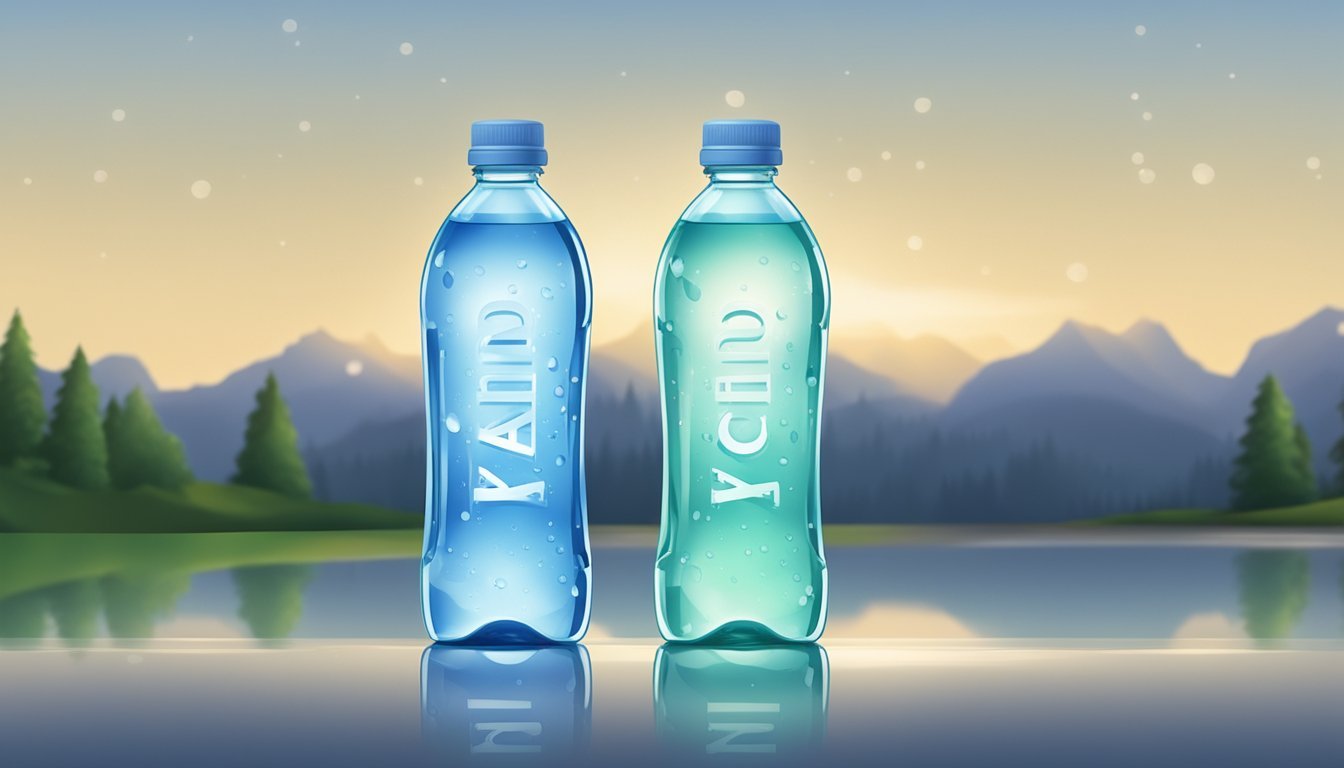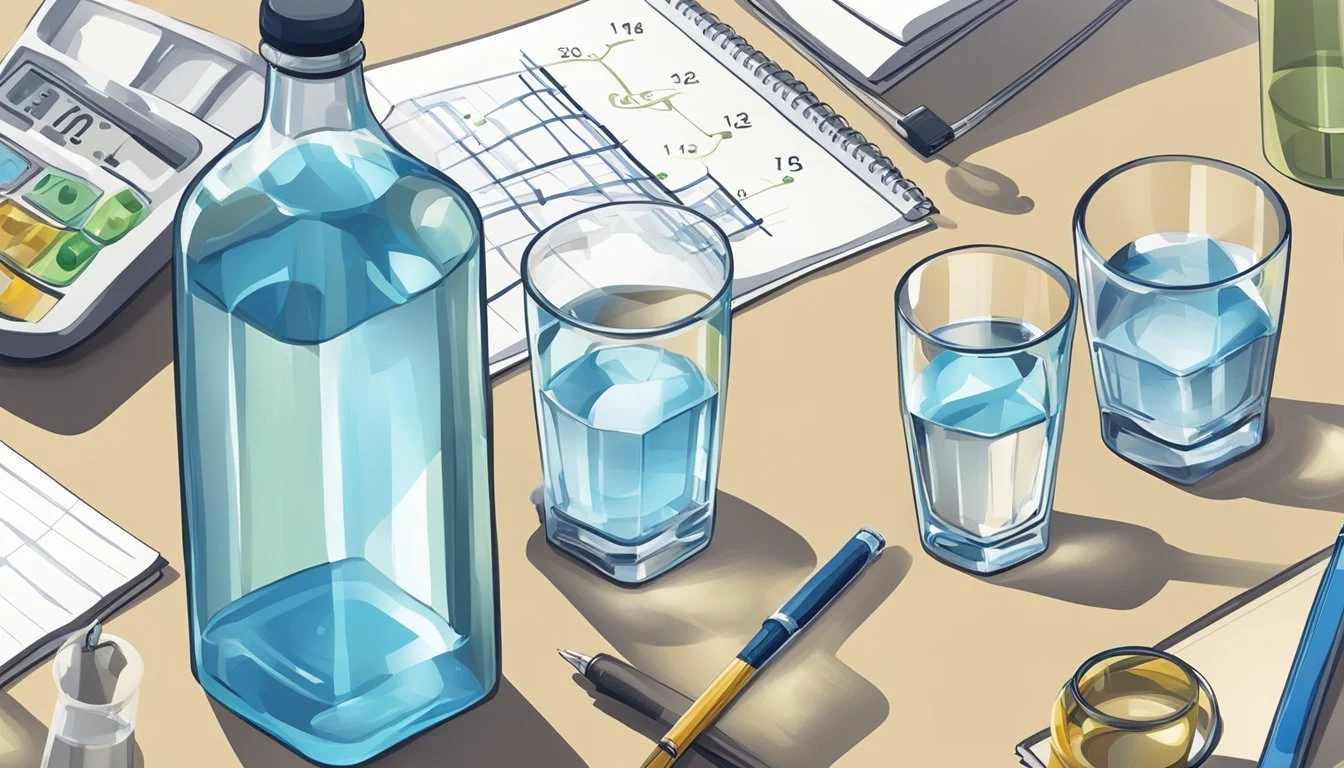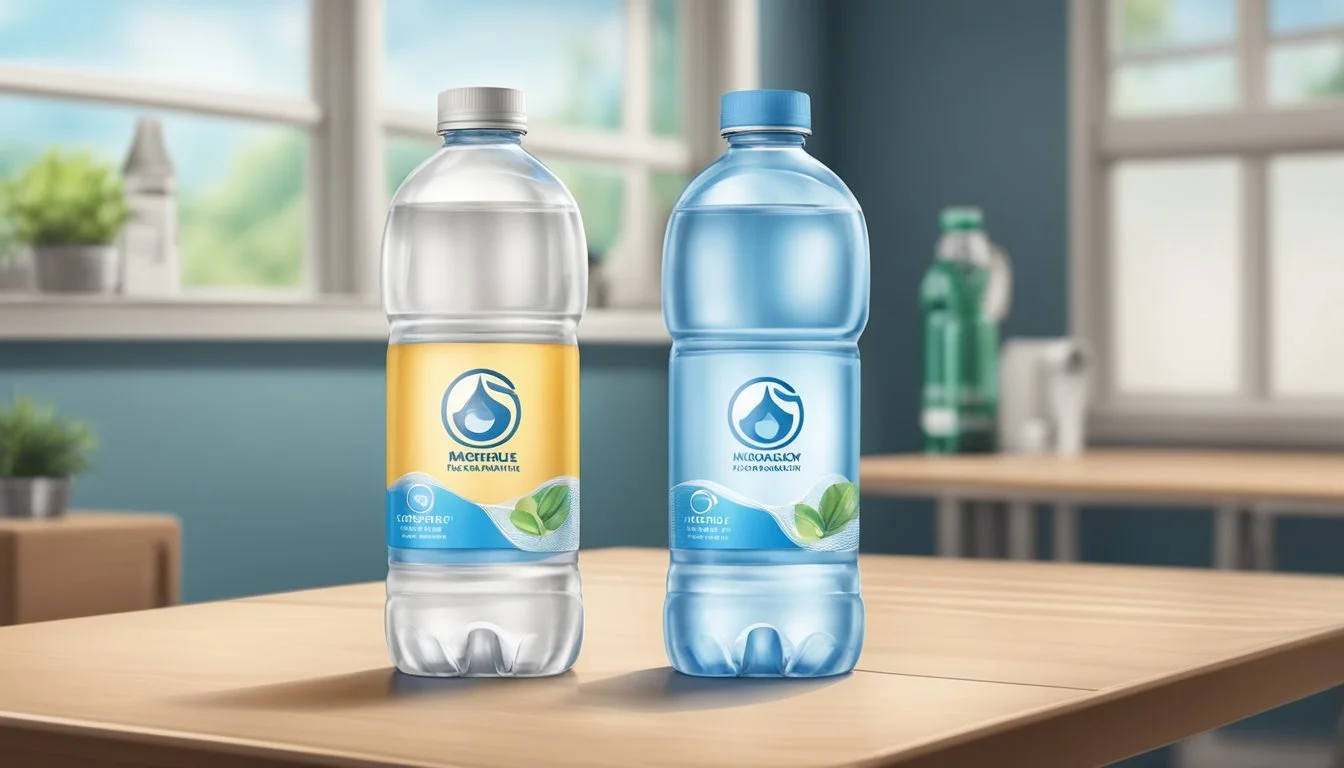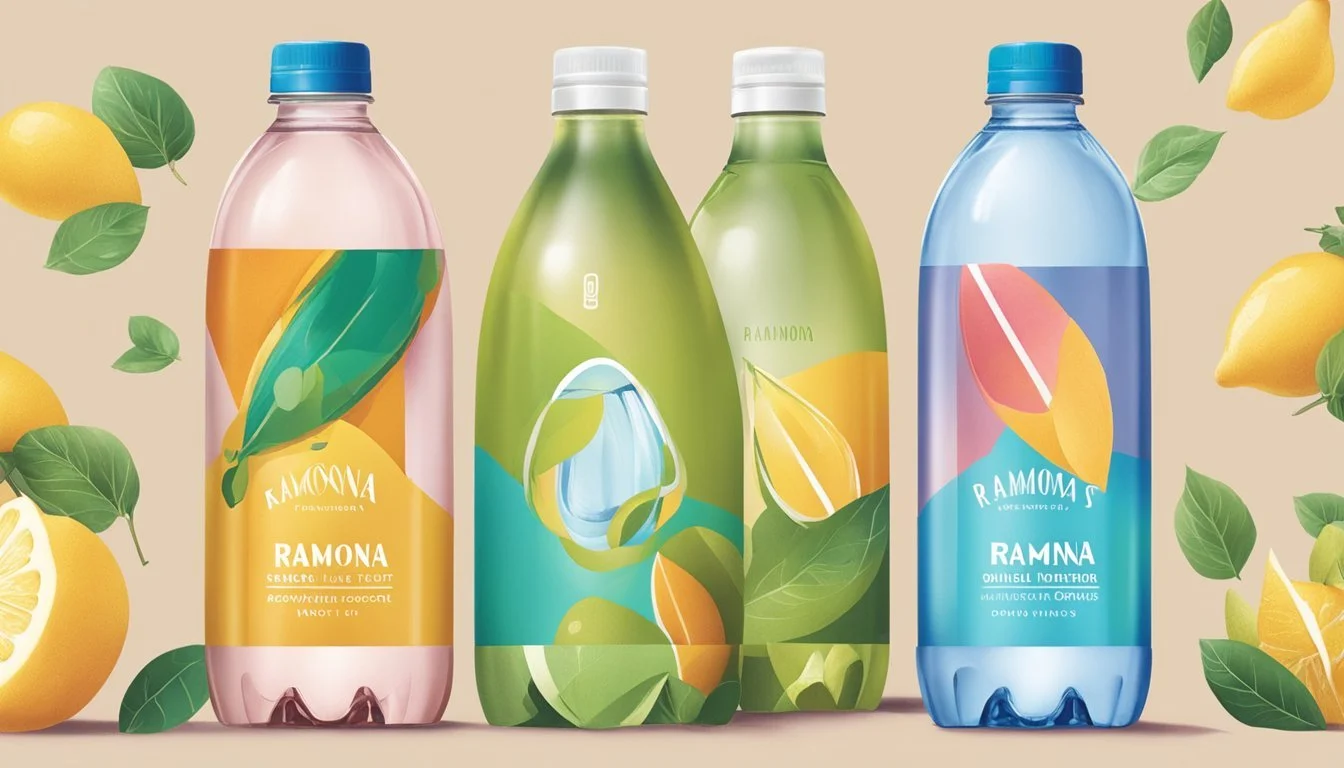Action vs. Ramona
The Ultimate Bottled Water Comparison
When it comes to bottled water, choosing between Action and Ramona can be challenging for consumers who prioritize taste, convenience, and brand reliability. Both brands have made a name for themselves, but differences in their offerings can influence your preference. The clear choice for a better-tasting, more convenient bottled water between the two brands is Ramona, known for its crisp flavor and wide availability.
Action bottled water, while recognized for its purity, often draws mixed reviews on its taste profile. Some find it refreshing, while others note a slight aftertaste. Conversely, Ramona consistently gets high marks for its clean and refreshing taste, devoid of any plastic or chemical notes.
In terms of convenience, Ramona wins again by being more widely available in stores and online. This easy access makes it a go-to option for many who value both taste and availability in their daily hydration. Choosing Ramona is choosing a brand that delivers on taste and convenience, making it the superior option in this comparison.
Understanding Bottled Water
Bottled water comes in various types, each with distinct characteristics.
Spring Water originates from underground formations and flows naturally to the surface. It is collected only at the spring or through a borehole tapping the underground formation.
Mineral Water contains minerals and trace elements. It must come from a geologically and physically protected underground water source and contain at least 250 parts per million total dissolved solids.
Artesian Water is drawn from a well tapping a confined aquifer where the water level stands above the top of the aquifer.
Purified Water is water that has been mechanically filtered or processed to remove impurities. Methods include distillation, deionization, and reverse osmosis.
Water Sources for bottled water include natural springs, municipal sources, and groundwater. Municipal water, often known as "tap water," is treated and purified from city water systems. Groundwater, tapped from aquifers, is naturally filtered through soil and rock layers.
Here’s a quick comparison:
Type Source Key Characteristics Spring Natural springs Natural filtration, varies in mineral content Mineral Protected underground High mineral content, specific TDS levels Artesian Confined aquifers Naturally pressurized Purified Various sources Thoroughly filtered, minimal impurities
Different consumers prefer different types based on taste, mineral content, and perceived health benefits. It’s essential to understand where the water comes from and how it's processed.
Health and Safety Aspects
When assessing Action and Ramona bottled water, it’s crucial to focus on health and safety aspects.
Action bottled water undergoes rigorous testing to meet FDA standards, ensuring it's free from harmful contaminants like PFAS chemicals and arsenic. The company adheres to guidelines set by the Environmental Protection Agency (EPA), guaranteeing safe drinking water.
Ramona offers similar safety standards, with regular quality checks to prevent contamination. They deploy advanced filtration systems to eliminate impurities, meeting both FDA and EPA requirements. This ensures that health risks from toxins, such as arsenic, are minimized.
Water Quality
Both brands emphasize high water quality:
Action: Uses a multi-step purification process.
Ramona: Focuses on maintaining stringent quality controls.
Contamination Prevention
To avoid water contamination, both companies implement robust safety protocols:
Action: Invests in state-of-the-art purification technology.
Ramona: Conducts frequent laboratory tests to check for contaminants.
Safety Measures
Action and Ramona both ensure their water is safe for drinking:
Action: Regular audits by independent bodies.
Ramona: Continuous monitoring of water quality.
By adhering to these standards, both brands aim to provide safe, high-quality drinking water to consumers.
Taste Profile Analysis
Action and Ramona water brands offer distinct taste profiles influenced by their mineral content and flavor, as well as results from comparative taste tests.
Mineral Content and Flavor
Action Water derives its flavor from its mineral content sourced from natural springs. This includes naturally occurring electrolytes which contribute to its smooth taste. The flavor profile of Action Water often has hints of natural minerals, leading to a refreshing and slightly crisp taste.
Ramona Water, similarly sourced from natural springs, is known for its high mineral content, which includes a balanced mix of calcium, magnesium, and potassium. This creates a rich taste with a slightly sweet undertone. The presence of these minerals also contributes to the overall mouthfeel, offering a fuller drinking experience compared to more purified brands such as Aquafina or Dasani.
Comparative Taste Test
In blind taste tests, Action Water and Ramona Water are often compared to well-known brands like Fiji, Evian, Essentia, Pure Life, and Dasani. Action Water tends to be favored for its cleaner, crisper profile, making it a good choice for those preferring subtle, less mineral-heavy water.
Ramona Water generally appeals to consumers who enjoy a richer, more complex flavor, similar to Evian and Fiji. Test participants frequently note its enhanced natural filtering process that preserves minerals without the metallic aftertaste that can sometimes be present in bottled mineral water.
These differences in taste preference highlight the importance of individual palate, as some tasters might prefer the smoothness of Essentia, while others lean towards the delicate balance found in Ramona or the refreshing simplicity of Action.
Brand Analysis and Comparison
Action and Ramona, two prominent bottled water brands, have different histories, market positions, and product ranges that set them apart.
Action vs. Ramona Brand History
Action originated from a desire to offer premium, pure water. Launched in 1998, it sources its water from pristine mountain springs.
Ramona, established in 2005, aims to provide affordable bottled water without compromising on quality. It draws from multiple freshwater sources to cater to diverse market needs.
While Action emphasizes purity and exclusivity, Ramona focuses on accessibility and affordability, positioning itself as a versatile option in the market.
Market Position and Range
Action targets the upscale segment with its premium positioning. Its product range includes spring water, mineral water, and sparkling water.
Features a sleek, eco-friendly packaging.
Ramona, however, thrives in the mass market, offering a broad array of options like purified water, flavored water, and enhanced water.
Known for its competitive pricing and wide availability.
Action leans towards a niche audience, whereas Ramona's extensive range and pricing strategy help it secure a significant market share.
Environmental Impact
Action and Ramona bottled waters differ significantly in terms of their environmental impact, primarily concerning their packaging sustainability and carbon emissions during production.
Packaging and Sustainability
Action bottled water primarily uses PET plastic bottles. While PET is recyclable, it is often disposed of improperly, ending up in landfills and oceans. This results in plastic pollution, affecting marine life and ecosystems.
Ramona opts for glass bottles and boxed water alternatives. Glass bottles, though heavier and more energy-intensive to produce, can be reused multiple times before recycling. Boxed water uses sustainable materials with a lower environmental footprint, often sourced from responsibly managed forests.
Both brands encourage the use of reusable bottles and are investing in innovations to reduce packaging waste. This includes the development of biodegradable plastics and increased access to recycling facilities.
The Carbon Footprint of Water Production
The production of bottled water is energy-intensive, leading to significant CO2 emissions. Action's PET bottles require substantial energy for production and processing. Research indicates that for every 50 oz of bottled water produced, 1.6 to 22 oz of CO2 is emitted.
Ramona's focus on glass bottles and boxed water creates a different emissions profile. Glass production emits more CO2 initially, but since glass can be reused and recycled effectively, the long-term emissions are lower. Boxed water has a smaller carbon footprint, primarily due to the use of renewable materials and more efficient production processes.
In terms of transportation, glass bottles are heavier, thus increasing fuel consumption and emissions. Boxed water, being lighter, results in fewer emissions during transit.
Cost and Accessibility
The cost and accessibility of bottled water are essential considerations for consumers choosing between Action and Ramona. These aspects significantly influence the overall value and convenience offered by each brand.
Value for Money
Action and Ramona come at different price points, with Action generally being more expensive. Action often markets itself as a premium brand with enhanced features like added electrolytes, which justifies its higher price. Conversely, Ramona targets budget-conscious consumers with competitive pricing.
While Action’s pricing might appeal to those seeking specific health benefits, Ramona provides a solid option without breaking the bank. Both brands offer multi-pack deals, but Ramona’s are typically the more economical choice, making it a strong contender for value-driven shoppers.
Distribution and Availability
Action and Ramona have differing levels of accessibility. Action is predominantly available in specialty stores and upscale grocery chains, which might limit its reach. Despite its limited distribution, its presence in high-end retailers ensures it attracts a particular customer base.
Ramona, on the other hand, benefits from wider distribution across major grocery stores and convenience shops. This extensive availability makes it a more accessible choice for the everyday consumer. Additionally, Ramona's strong online presence ensures easy access through e-commerce platforms, providing further convenience.
Action’s distribution channels reflect its premium branding, while Ramona’s widespread availability makes it a practical option for a diverse range of consumers.
Additional Features and Benefits
Both Action and Ramona bottled waters offer unique features and benefits, extending beyond basic hydration to provide enhanced options and rigorous quality assurances.
Enhanced Waters: From Sparkling to Alkaline
Action and Ramona both offer enhanced water options. Action focuses on providing sparkling and flavored waters, appealing to consumers seeking a tasty alternative.
Ramona, on the other hand, offers alkaline water with balanced electrolytes to maintain optimal pH levels. While Consumer Reports suggest that alkaline water may not have significant health benefits, it is popular among those who believe it supports overall wellness.
Moreover, the inclusion of electrolytes by Ramona helps in rehydration after strenuous activities, making it a preferred choice for athletes.
Certifications and Quality Reports
Action and Ramona comply with stringent regulations to ensure safety and quality. Both are certified by the International Bottled Water Association (IBWA), indicating adherence to high standards.
Action provides detailed quality reports available on their website, showcasing rigorous testing protocols against contaminants.
Ramona emphasizes its source purity and conducts routine quality assessments to maintain consistency.
Consumers can review these quality reports to make informed decisions. Both brands ensure compliance with health and safety regulations, providing reliable options for drinking water.
Consumer Insights and Perspectives
Consumer preferences and professional opinions offer valuable perspectives on the quality and appeal of Action and Ramona bottled waters.
Customer Reviews and Ratings
Customers have expressed varied experiences with Action and Ramona bottled waters. Action often receives praise for its crisp taste and refreshing feel, frequently noted in online reviews. Some customers appreciate its minimal environmental footprint, citing the brand's use of recyclable materials.
In contrast, Ramona is lauded for its purity and premium feel. It often scores high in customer satisfaction due to its smooth taste and sleek packaging. However, some reviews mention concerns over the higher price point compared to other brands.
A comparison of ratings shows Action averaging 4.2 stars on major retail sites, while Ramona holds a slightly higher average of 4.5 stars. Specific points of interest include taste, packaging, and perceived quality of the water itself.
Expert Opinions and Water Sommeliers
Experts and water sommeliers provide a deeper analysis of both brands. Action's water often earns accolades for its balanced mineral content, making it a reliable choice for hydration and daily use. Water sommeliers point out the subtle yet distinct mineral profile that contributes to its refreshing character.
Ramona, on the other hand, is celebrated for its superior filtration process, which results in a cleaner and more refined taste. Some experts highlight the brand's commitment to sourcing water from pristine natural springs, adding an element of exclusivity.
Consumer Reports have identified both Action and Ramona as top picks in various categories, though Ramona's filtration quality gives it a slight edge. Professional tastings often reveal Ramona's nuanced flavors, which are appreciated by connoisseurs looking for a premium experience.
The Bottom Line
When deciding between Action and Ramona bottled water, multiple factors come into play.
Taste: Many consumers report that Action has a crisp, clean taste, while Ramona might have a slight tang at the end. Taste preferences vary, so personal choice matters.
Price: Action is often more affordable compared to Ramona. This could influence the consumer decision, especially for regular buyers.
Source: Action sources its water from natural springs, providing a sense of purity. On the other hand, Ramona is known for triple filtration, which ensures cleanliness.
Environmental Impact: Action uses eco-friendly packaging, while Ramona has been criticized for plastic waste. Eco-conscious buyers might prefer Action.
Criteria Action Ramona Taste Clean, crisp Slight tang Price More affordable Higher cost Source Natural springs Triple filtration Environmental Impact Eco-friendly packaging Criticized for plastic
In the quest for the best water, both brands have strengths and weaknesses. Consumers should weigh these aspects based on their values and needs.








